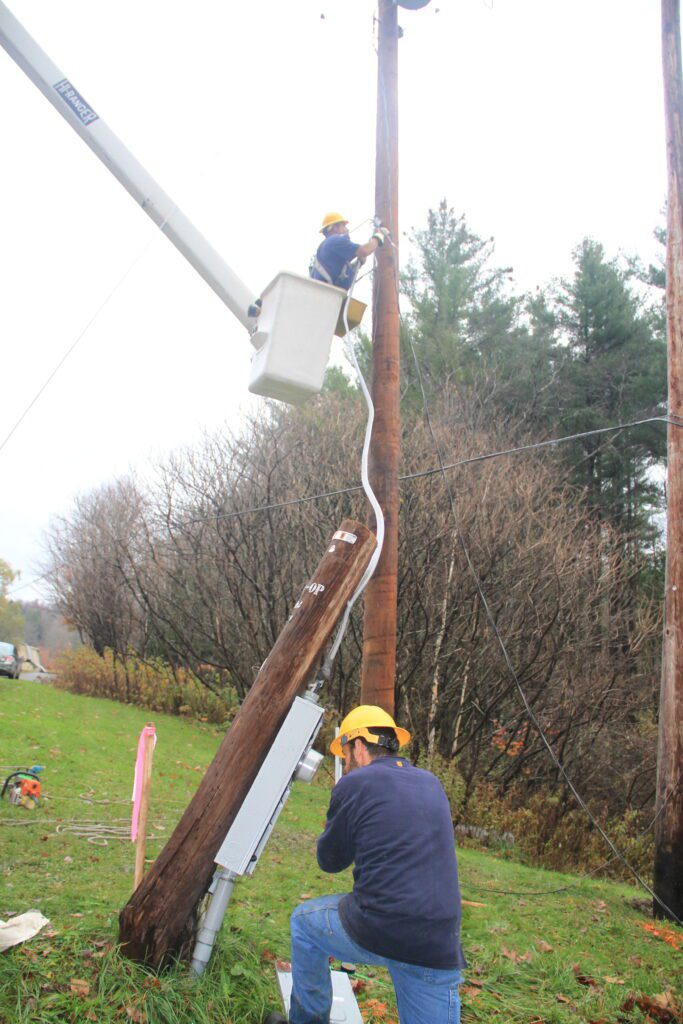All members require infrastructure, but cost to maintain it is shifted to ratepayers
WEC’s infrastructure costs have risen in recent years. The Co-op has prioritized improving reliability in the face of climate change-related storms and tree damage: that means replacing old poles, installing new poles to shorten long spans of wire, removing “danger trees” that could fall on the lines, including ash trees susceptible to emerald ash borer infestations, and otherwise keeping rights-of-way clear – without using herbicides to prevent vegetation regrowth, per Co-op policy. More recently, global supply chain tie-ups have raised equipment costs, and rapidly changing data and security best practices will make grid improvements necessary.
In July of this year, WEC finished phasing in a new rate structure. Designed to help stabilize the Co-op’s finances and make Co-op electricity a more economical power alternative to fossil fuel, the redesign lowered the Co-op’s fee per kilowatt hour. WEC also increased the monthly member service charge from $12.97 to $26.49, phased in over three years as ordered by the Public Utility Commission.
In a listening group exercise in November 2017, a rate redesign member forum in September 2018, and at other times, some members protested the Co-op more than doubling its monthly fee. But in the 2017 listening groups, former GM Patty Richards told members that the member service charge had long been suppressed. Co-op Currents reported at the time that fixed costs balanced out closer to $76 per member per month.
Today, the actual cost is closer to $90. That means, said Board Treasurer Don Douglas, “if your electric bill is more than $90, you’re paying your full freight.” And if your bill is less than $90, he explained, other members’ higher bills subsidize the actual cost of bringing electricity to your home.
On summer days, net metered solar panels contribute a great deal of electricity to WEC’s grid: power that Vermont requires utilities to pay premium rates for. “I don’t think there’s a single other state that pays retail for excess solar production,” said Douglas. “When I go to NRECA [National Rural Electric Co-op Association] meetings, people are astonished we pay 16 and a half cents per kilowatt hour for solar.”
Solar is an intermittent source of generation, which means that it is not reliable 24/7/365. There is not yet sufficient battery technology to store it. However, Vermont requires utilities to pay net meterers for all the power they produce, whether it’s needed or not, which means summer production can keep net meterers’ bills low in winter, when they are pulling power from WEC sources. And unlike off-grid solar projects, net meterers are grid-connected, which means they are, like all WEC members, reliant on Co-op poles and wires.
There’s a $60-plus per month cost shift from those members who net meter to everybody else for those services they use but don’t contribute to as much.
Louis Porter
So while net meterers require the same infrastructure that costs an average of $90 per member account to maintain, for many months of the year, many pay only the $26.49 monthly fee. As GM Louis Porter put it, “There’s a $60-plus per month cost shift from those members who net meter to everybody else for those services they use but don’t contribute to as much.”

